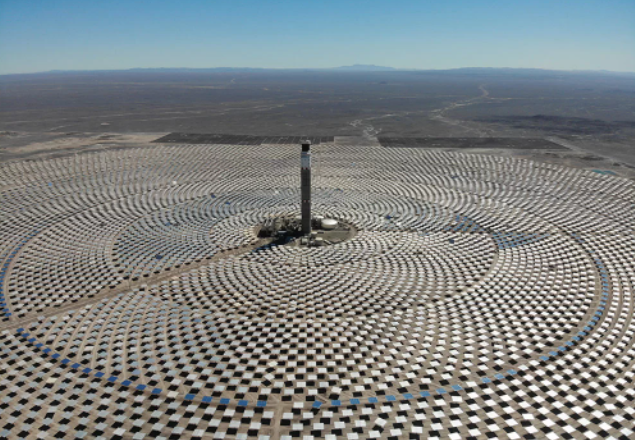The latest IMF report highlights the recessionary effects generated by the invasion of Ukraine on the global economy, as well as a series of supply shocks that mark a new global inflationary era. While the inflation unleashed by the COVID-19 pandemic was considered transitory, the inflationary pressure that is now being detected is evidence of a structural nature. The global economy is entering a new stage, one of higher inflation.
For some experts, this represents the déjà vu of the oil crisis of the 1970s that transformed the international economy and finance. The crisis marked the decline of post-war Keynesianism and monetarism emerged as the dominant vision. By the same time, interest in ecological and environmental issues was also growing, and sustainable development began to be considered. Shortly thereafter, the scientific community began to warn about the problem of global warming.
Rethinking the inflationary dilemma in the face of the challenge of climate change
In low-income and middle-income countries, external shocks become more important and more frequent. In this context, commodity-exporting countries (oil, mining, agriculture) benefit from a price increase, although they are exposed to higher inflation. These are countries with non-diversified economies and strong social inequality, so inflation ends up affecting the majority given their consumption pattern.
On the other hand, climatic phenomena are extreme and are becoming increasingly severe, which poses major economic challenges. In this context, monetary authorities should monitor risks, as an aimless transition may lead to the problem of stranded assets. But the effects of such a transition on inflation should not be neglected either.
Macroeconomic imbalances associated with extreme events require large investments in adaptation, which induces inflationary resurgence.
With investments in mitigation, we note that the transition process has triggered a significant increase in the price of minerals such as copper, nickel, graphite, lithium, and cobalt. An electric car consumes six times more minerals than an internal combustion car, and minerals account for 20% of the cost of wind power equipment. All this has led to significant increases in the price of these minerals in the last two years. The price of lithium has increased by 1000%, nickel by 300%, and copper by 200%.
This new energy equipment does not generate more than 3% of the total energy produced, while electric cars do not represent more than 1% of the global fleet. While the transition may turn out to be a blessing due to higher incomes, it can easily turn into a curse with strong inflationary consequences.
Cleaner production also entails higher costs which should not be seen as developed countries’ privilege. In fact, the implementation of the border carbon tax by the EU requires us to consider the environment when planning development, as it entails investments that will also generate more inflation.
In order to move forward with clean energy and move away from fossil fuel dependence, various policy options arise, such as carbon pricing, regulation, and subsidies. Whatever the alternative, all of them imply a higher cost that affects companies and consumers.
In the case of the value of EU emission permits, while a ton of carbon averaged 21 euros in February 2021, the following year it was close to 100 euros. But beyond the variations, the path is explained by decisions taken both in recent years and by the invasion of Ukraine.
The imposition of a carbon tax (the elimination of fossil fuel subsidies) not only implies greater inflationary pressure but also greater social tension, given the transfer (total or partial) of the increase to consumers. Although its introduction induces less pollution, the tax is regressive since it is the low-income social sectors that spend a greater proportion of their income on fuel purchases or public transportation.
Despite this, it would seem that future markets have adopted the transition as irreversible. Financing oil companies has become more expensive, either because of the fear of stranded assets or the introduction of stricter regulations. All this has induced a lower investment rate, which at this juncture strengthens the price of fuels and generates greater inflationary pressure. This should accelerate the transition. However, it cannot be overlooked that this process requires time, since investments are costly. One way or another, the transition generates inflationary effects.
This suggests that the traditional monetary policy response of tightening credit conditions is not the best option. Such a response is more appropriate in countries where the financial sector is of little relevance. But if in these countries aggregate demand is insensitive to changes in the interest rate, the reaction to the exchange rate is different.
An increase in the price of commodities leads to an appreciation of the domestic currency, a phenomenon that can be amplified by the inflow of financial capital in the face of a rise in the local interest rate (carry trade). Although this benefits consumption and, eventually, the poorest sectors, the bonanza has destructive effects on the productive apparatus, especially in economies open to capital flows. This explains the heterodox responses implemented by several governments in the region in the 2000s, as well as the IMF’s recently ratified change of opinion regarding capital controls.
Beyond the conjuncture, marked by the Russian invasion, the energy transition characterizes the current inflationary phenomenon as long-lasting and Latin America should move forward with the transition. This obliges the political class to conceive alternatives and move forward with innovative proposals. For example, an extraordinary income tax could be introduced to tax the profits of mining companies, as these will continue to rise during the transition. We could also move forward with some variation of the capital control scheme implemented in the past by Chile, but now penalizing the funds that come in to finance polluting industries.
When assessing the problem, we must leave dogmas behind and act pragmatically. We must move towards a new production and consumption scheme where the transition results in a sequential process. And governments should intervene to mitigate the macroeconomic consequences (price stability, exchange rate competitiveness, social policy, and just transition) as well as to prevent the generation of financial bubbles (investment in assets that may be stranded).
Translated from Spanish by Janaína Ruviaro da Silva













